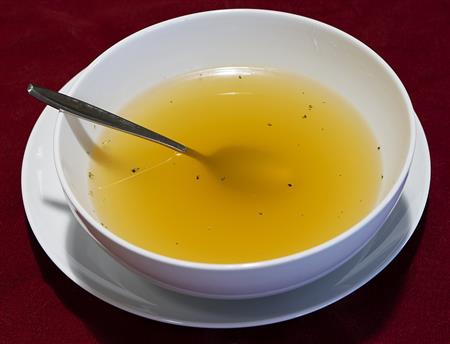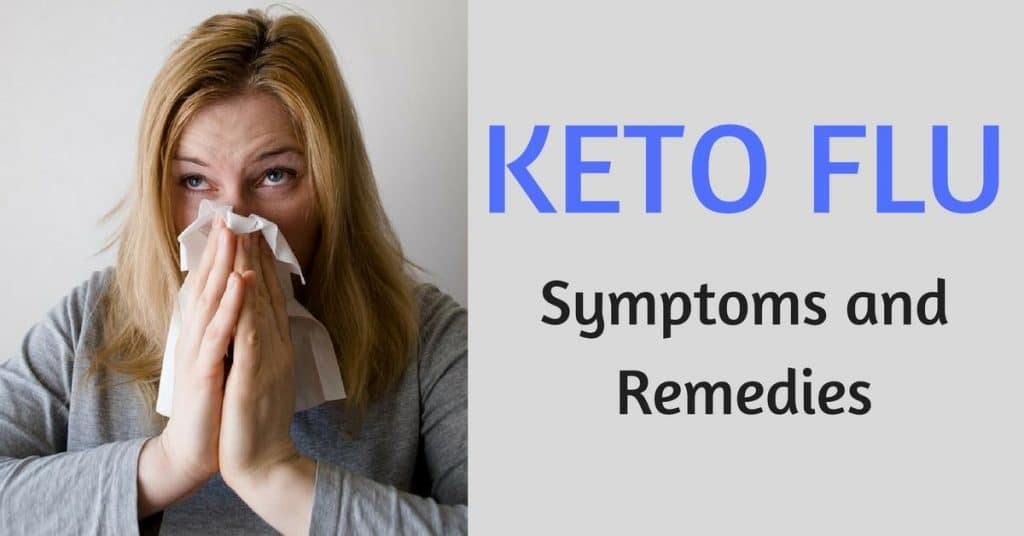As a health-conscious and fitness enthusiast, you might be interested in a ketogenic diet. Keto is very effective at reducing the extra fat in your body. But eliminating the lifelong habit of eating carbohydrates on a daily basis can have some initial disturbances.
One of the most common temporary side effects of ketosis is the keto flu, also known as keto cold, low-carb flu or induction flu, sometimes can be referred to as the Atkins Flu.
You might feel nauseous, irritation or maybe mental blurriness on the first few days of the keto diet.
Research shows that quitting sugar is like quitting drugs. So think of it as kicking a bad drug habit!
Don’t worry, these unwanted symptoms will go away in no time! (1)
So, What is the Keto Flu?
As you start avoiding the usual carbohydrate-rich foods, your body thinks that there is a problem. It will rebel at first and cause flu-like symptoms. This particular situation is termed “keto flu” and it’s one of the ketosis signs.
Our body is very receptive and soon will find a new source of energy, in our case, it comes from dietary fats. The body will start to burn fats and work like a fat-burning machine.
How Long Does Keto Flu Last?
The symptoms of keto flu last for about two to five days. In some cases, people face these symptoms for up to 15 days. Normally, the flu will visit you between day three and day seven, and leave between day 5 and day 15.
Some people experience the flu while others don’t. It depends on how carb-dependent you were before starting the keto diet and reducing daily carb intake. The more carbs your body used to consume, the worse the symptoms.
The Symptoms of the Induction Flu
So, what does keto flu feel like?
The symptoms are pretty common, almost like the common flu. Maybe your symptoms are like:
- Fatigue or constant feeling of weakness
- Muscle cramps
- Dizziness or headaches
- Extreme cravings for carbohydrates i.e. sugar
- Irritation
- Diarrhea
- Mental fogginess or blurry focus
- Nausea
- Sleep deprivation
- Keto brain fog
These symptoms, including having a bad breath, are also the signs of your body is in ketosis, which is a good thing actually.
So, if you are facing these symptoms after starting the ketogenic diet, you might be having normal induction flu reactions. There are simple treatments for this which we explain more below.
What Causes The Keto Flu?
The keto flu isn’t something you can catch by going out into the cold weather without a jacket. It’s also not something that can be transferred from person to person.
Unlike a typical virus, the keto flu doesn’t mean that you are contagious. However, the symptoms of the keto flu can be similar to that of the common cold. This makes it easy to confuse the two.
The keto flu refers to the changes your body experiences as a result of such a drastic dietary change (a significant reduction in carbohydrate intake). These changes take place at a cellular and metabolic level as your body begins the process of switching its fuel source from glucose to fat.
The symptoms you feel from the low-carb flu is your body’s way of telling you that something is changing internally, and it’s not always a welcome change at first. But trust us, it gets a lot better once your body is fully fat-adapted!
You may notice that your keto flu symptoms are worse or different than someone else’s, especially if you’re used to eating a high carbohydrate diet.
The keto flu refers to adverse symptoms may include vomiting, nausea, headaches, insomnia, dizziness, constipation, and problems when exercising. Research shows that these symptoms usually only last a few days or weeks (2).
During this time, it’s important to take in adequate fluids and electrolytes. The keto flu is not to be confused with other diseases such as kidney stones, vitamin and mineral deficiencies, hepatic steatosis (fatty liver disease), and hypoproteinemia (low levels of protein in the blood) which you need to consult with your doctor.
For this reason, it’s very important that you follow the guidelines of the keto diet under the supervision of a qualified health professional.
Research shows that it takes approximately two days for your body to use up all your stored glycogen once you switch to a high-fat diet. You can also deplete your glycogen storage within a few hours by participating in intense exercise (3).
Glycogen is the form of glucose that is stored in your liver and saved for energy use later. When you eat carbohydrates, your body breaks them down into molecules of glucose. Insulin directs glucose that you need immediately for energy directly into cells.
When you eat more glucose than you need, your body stores this extra glucose in the form of glycogen. When you first start a high-fat diet, your body has to burn through its stored glycogen before it can begin to use fat as energy.
During this two day time, your body may experience changes or symptoms known as the keto flu while adjusting to this new source of energy that you’re feeding it. When the two days are up and most of your stored glycogen is burned off, your body starts running off ketones and the symptoms of the keto flu usually let up.
Most people find that their keto symptoms are the worst during these two days, which is why it’s common to think you’re suffering from a cold or the real flu. You can prevent it or greatly reduce its symptoms by using our tips below.
What Are Remedies to Get Rid of Keto Flu?
As we have said before, the induction flu is quite a common scenario if you are starting this diet plan. But you could follow some habits that can help you cope with this unwanted situation.
#1. More Exercise; Better Metabolism

With a tired and fatigued body and slurry mental condition, exercise might seem the toughest thing to do. But trust me, it would make you feel a lot better.
Your body will be metabolically fit and flexible. We are not talking about hardcore muscle-building gym training, just do light exercises, such as a few sit-ups, and free-hand exercises will work wonders.
#2. Give Your Body More Electrolytes
The best way to help your body during the induction phase is to replenish electrolytes frequently. Electrolytes are the minerals inside your body that can carry electric charges.
The common electrolytes are potassium, magnesium, sodium, calcium, and phosphorus.
Where can you find them? Green vegetables like spinach, broccoli, leafy greens, and seaweed are good sources.
You can also have some dark chocolate. They work like a charm in this situation! Plus, chocolate has been shown to help boost your mood. Meat, fish, and cheese are always welcome!
You can also try electrolyte powder products. Choose the one that is a complete dissolvable mineral drink and provides enough electrolytes for your needs.
#3. Water is the Best Friend
Always keep your body hydrated and drink as much fluid you can. You should drink at least 8 ounces of water, which is about 1.9 liters.
Apart from pure drinking water, you could try lemon water. Avoid colas or carbonated beverages. They might just hit back!
Giving your body enough fluids will help you to ensure good metabolism.
Studies show that drinking 500 ml of water increases your metabolic rate by 30%. It will also help you to get rid of the blurry mental conditions and fatigue (4).
#4. More Fat and Calories
The basic nature of the keto diet is to eat more healthy fat while restricting carbs. Eat fat to burn the fat! You should be eating fat in larger quantities compared to carbs and protein.
A common mistake made by the early participants of the keto diet is that they eat fewer carbs but don’t eat enough fats to fill the void. This makes the body really weak and feeble.
So, eat more meat and animal protein. This would help you cope with the lack of calories. For how much fat to eat on keto, check this guide!
#5. Salt Up Your Diet
As you start the keto diet, your needs for sodium in your body may actually increase.
So, what should you do? The first thing to do would be adding salt to your regular diet. As you know, a lot of carbohydrate-based foods have salt in them. So, increasing your salt intake won’t do any harm to your body.
#6. Try Adding Clean Carbohydrates
Our body can react quite harshly to carbohydrate restriction. If the flu is making you too tired and sick, then you should make the change gradually. Instead of kicking carbs all at once, start gradually by cutting one meal a day.
Eating a few clean carbohydrates that include lots of fiber will help the body go through the change more smoothly.
#7. Focus On Pure and Healthy Fats
Your body needs energy. Carbohydrates are normally the main source of energy for most people. If you are not eating them, your body needs something else for energy.
Try adding rich fats like MCT oil, butter, ghee, olive oil, coconut oil, and tallow to your diet. Yes, the kind of fats most people are afraid of. These rich fats will act as the fuel for your body.
#8. Keto Fans’ Favorite: The Bone Broth

You won’t believe how effective and nutritious bone broth is! Salted bone broth is a great food to eat during the keto flu. You can also try these keto bone broth and soup by Kettle and Fire.
Even salted chicken broth helps a lot. These broth recipes are rich in collagen, gelatin, protein, minerals, and vitamins.
The bone broth that we suggest is made of beef bone marrow. If you don’t like beef, you could replace them with lamb or mutton. Don’t forget to spice it up with salt. Then you would get the benefits of bone broth and sodium, too.
The beginning days of keto can be painful. But once you manage to cope up with the symptoms, you will start noticing the changes, like visible weight loss, better digestion, and sharp and clean thoughts. These are the gifts that keep on giving after the painful period of keto flu!
If you are thinking or planning to quit the diet only after seeing the symptoms of keto flu, think twice! Because you would miss out on all the amazing benefits of keto diet. And good luck to those of you who are still going through it. You will become the ultimate champion. Stay healthy and stay fit.
FAQs
Here are a couple of FAQs and things to keep in mind about the keto flu:
Some people never experience symptoms of the keto flu at all. This does not mean that your symptoms or experiences are abnormal. Remember that your body is switching fuel sources and experiencing changes at a cellular level. These changes may affect everyone differently.
Most people report that they experience keto flu symptoms for two or three days while their body is going through the process of burning glycogen. Your symptoms may last longer. However, they do not typically last beyond two weeks.
There isn’t a magic number when it comes to the duration or expectancy of the keto flu. Some people claim that they start to feel the effects of a low-carb diet almost immediately.
However, it takes around two days for your body to start burning off its stored glucose. You might have symptoms within a few days of cutting carbs, but we don’t think you’ll feel the effects of cutting your carbs immediately or even after a few hours.
Part of the beauty of the keto diet is that you don’t need any supplements at all to get into ketosis. However, you can use supplements to aid your diet while also focusing on whole foods.
More about supplements on keto
For example, taking BHB helps you overcome the symptoms of the keto flu in two ways. First, it provides you with mineral salts, which helps keep you hydrated. Staying hydrated may help fight off nausea, dehydration, and headaches. It can also help keep your energy levels up.
Next, BHB salts supply your body with ketones that it needs to get into ketosis. Supplementing with BHB, especially when you have low-carb flu symptoms, can help gently nudge your body into ketosis, as long as you continue to restrict carbs.
Other supplements that you might find helpful are MCT oil and collagen, but remember that you can always get into ketosis by eating real food alone.
Other products such as shakes, bars, and meal replacements can be used in an emergency. They tend to be vitamin-fortified, which can help with vitamin and mineral deficiencies. But we always recommend that you get your nutrition from whole foods whenever possible.







